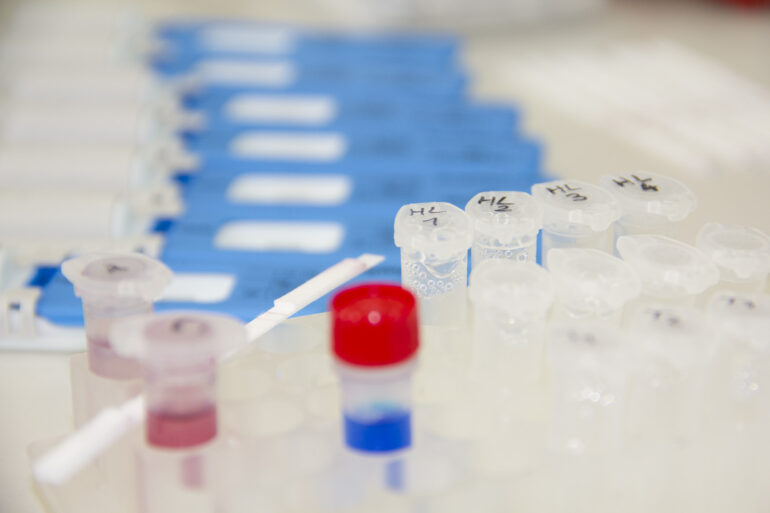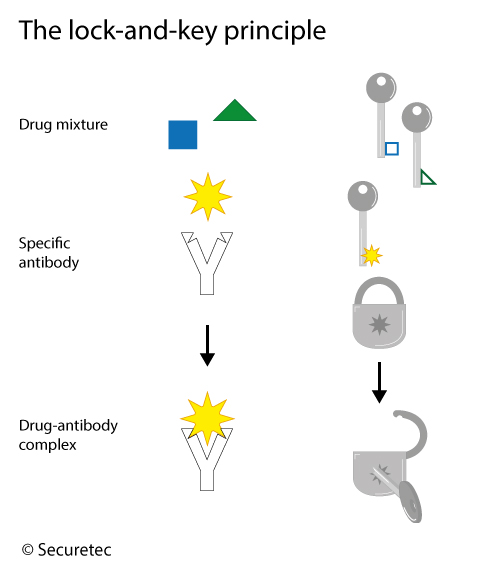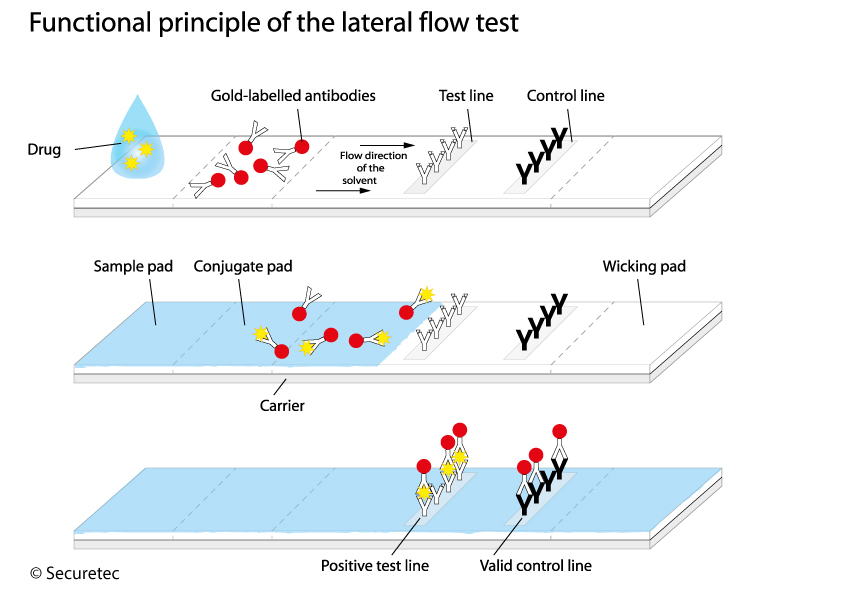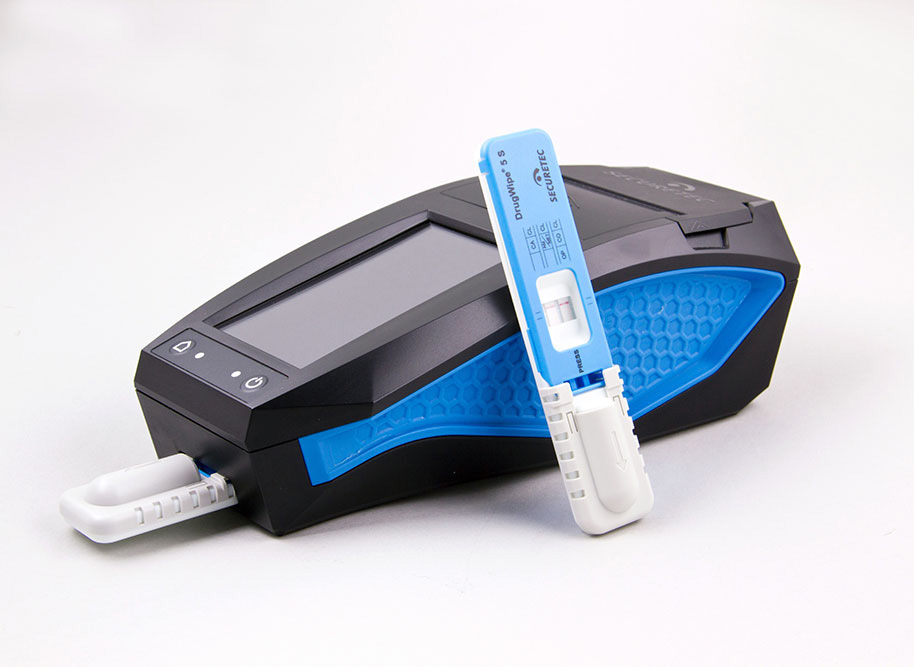
Pocket-sized biochemistry
At first glance, the way a drug test like DrugWipe works is pretty simple to grasp. However, it would be wrong to assume that the technology behind it is just as simple. On the face of it, the test seems convenient and functional. However, in the inner workings of the test, a biochemical chain of functions is at play to produce this impressive performance.
DrugWipe and other mobile rapid screening tests for drug detection are known as “lateral flow tests”. The methodology underlying these rapid tests is based on a reaction that follows the lock-and-key principle. This principle describes the perfect fit that exists between the physical structure of a drug and its corresponding antibody. The test only shows a positive result if the drug comes into contact with its perfectly matching antibody on the test strip.
|
The lock-and-key principle of lateral flow tests – the test only shows a positive result if the drug and antibody fit together perfectly. |
Antibodies – sensitive helpers
Antibodies are natural proteins. In vertebrates, the body produces antibodies when, for example, it comes into contact with a disease-causing pathogen. The same response occurs with a natural infection or a vaccination.
This physical response has been utilised to obtain suitable antibodies for use in rapid drug tests. Sheep, pigs, rabbits, chicken or mice are given a “vaccine” containing a specific drug.
Their bodies respond to vaccination by producing a specific antibody for the drug. This creates the perfect “lock” to match the “key” that is the drug.
Due to their natural origins, antibodies don’t tolerate high temperature. For an antibody, exposure to a temperature of 40°C or more for an extended period is akin to having a fever – its structure and thus its function are destroyed. As a result, DrugWipe should not be used at temperatures exceeding 40°C.
An impressive chain of biochemical reactions is at play within the DrugWipe rapid drug test.
How the test works
All materials and substances required are contained in the test cartridge. The test strips constitute the core element of DrugWipe. Each strip consists of various zones. The most important area is the conjugate pad. This is the location of the drug-specific antibodies, which are labelled with microscopic gold particles. The saliva sample is transferred to the sample pad using the sample collector. The reaction begins once the ampoule is broken. It contains an aqueous solvent, which flows along the test strip in the direction indicated. It first encounters the saliva sample and transports this in the direction of the conjugate pad. If the saliva sample contains molecules of drugs, these combine with the specific antibodies and are carried together as a complex to the test line. Antibodies are fixed in place at the test line, and these also respond to the specific drug. They catch the complex comprising the drug and gold-labelled antibodies as it swims past.
The small gold particles produce the typical red colour of a positive test line.
The remaining gold-labelled antibodies are carried on with the liquid as far as the control line, which they change to red. A coloured control line indicates that the test has been performed correctly with sufficient liquid and has produced a valid result. Excess fluid at the end of the test strip is absorbed by the wicking pad. In this way, simple and fast handling of a complex reaction within the DrugWipe produces a reliable result.
|
Functional principle and structure of DrugWipe – the sample is carried by a liquid along the test strip, passing over several zones. If the result is positive, the test line turns red. A red control line always appears if the test has been performed correctly. |






